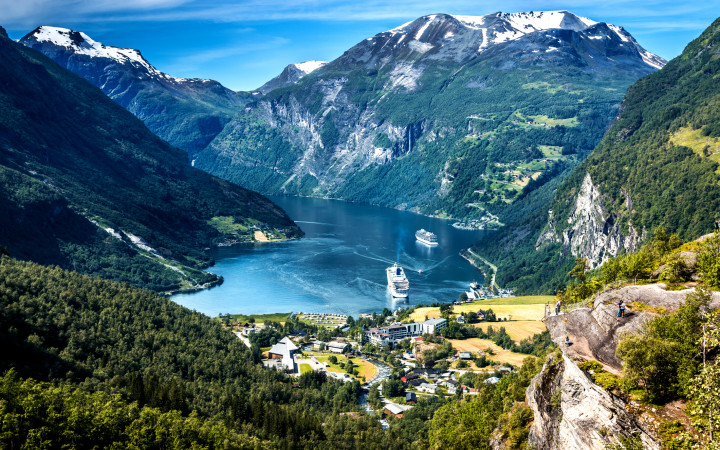Today’s Wonder of the Day was inspired by Kayla. Kayla Wonders, “What is a Fjord???” Thanks for WONDERing with us, Kayla!
What’s the topic of today’s Wonder of the Day? We’ll give you a hint: It’s formed by glaciers. Okay, here’s another: It’s common in Norway. Still WONDERing what we’re talking about? It’s the fjord, of course!
But what exactly is a fjord (say “fee-ord“)? It’s a long, narrow waterway that’s surrounded by steep cliffs on each side. Fjords were carved out of valleys long, long ago by glaciers.
When glaciers covered the Earth, they would often cut long, U-shaped valleys out of the bedrock in certain areas. Then, the glaciers started to melt. When the sea filled these areas, they became the long, narrow waterways we call fjords.
Because of the steep cutting action of the glaciers, most fjords are deeper than nearby seas. For example, Sognefjord—a fjord in Norway—plunges over 4,000 feet below sea level.
As glaciers formed fjords, they would often leave deposits behind. These would create a rise at the mouth of the fjord. This rise can cause some fjords to have very strong currents or even saltwater rapids.
Another dangerous feature found near some fjords is the presence of thousands of small, rocky island blocks. These areas are called skerries and they can be treacherous for ships to navigate.
Because they were formed by glaciers, fjords tend to be located in mountainous areas close to large bodies of water. For example, Norway is famous for its fjords. You can also find fjords along the west coast of Europe, Alaska, Canada, Greenland, New Zealand, and Chile.
Recently, scientists have discovered coral reefs at the bottom of many fjords in Norway. They’re not sure how these coral reefs formed. However, they do think that the marine life that exists there might explain why the Norwegian coastline is such a good place to fish.
Have you ever seen a fjord in person? Would you like to? Two of the most extreme fjords in the world can be found in Greenland and Antarctica. Scoresby Sund in Greenland is the longest fjord in the world, measuring 217 miles long. Skelton Inlet in Antarctica is the deepest fjord in the world. It plunges 6,342 feet deep!
Standards: CCRA.L.3, CCRA.L.6, CCRA.R.1, CCRA.R.2, CCRA.R.4, CCRA.R.10, CCRA.SL.1 NGSS.ESS1.C




